Last updated: June 13, 2025
As a long-time horse owner, I’ve seen countless breeds, but the Andalusian horse stands apart for its beauty, intelligence, and deep historical roots. While I’ve never owned one, friends who do can’t stop praising their elegance and versatility. Let’s explore what makes this Spanish breed extraordinary and why it continues to captivate equestrians worldwide.
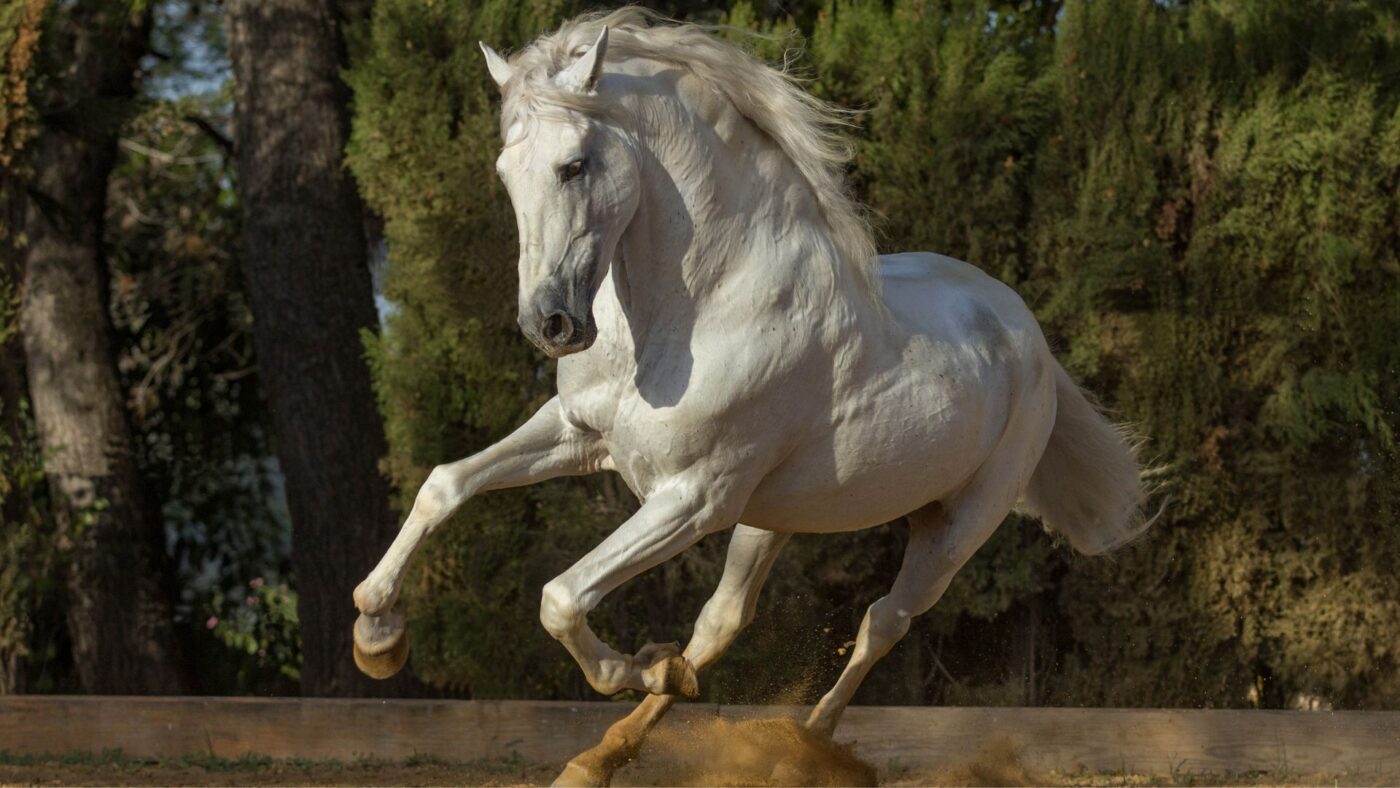
The Rich History of Andalusian Horses: War, Art, and Royalty
The Andalusian horse, also known as the Pure Spanish Horse (Pura Raza Española or PRE), is one of the oldest and most influential breeds in the equestrian world. Its enduring legacy is deeply intertwined with Spain’s history, culture, and art. For a deeper exploration of their historical roles and influence, visit the Equine Heritage Institute, which provides insightful research on equine history.
Ancient Origins: How Andalusians Shaped Equestrian History
The Andalusian’s origins trace back thousands of years to the Iberian Peninsula, where its ancestors were revered for their beauty, strength, and intelligence. These early horses were not only used in daily labor but also played critical roles in warfare and as status symbols among the elite.
Their lineage influenced other famous breeds, including the Lipizzaner and Lusitano, both of which inherited the Andalusian’s grace and power. For more information on related Spanish breeds, check out Famous Spanish Horse Breeds: Andalusian, Lusitano, and More.
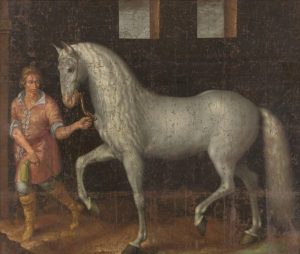
Prestige in the Middle Ages: Andalusians as Knights’ Horses
During the Middle Ages, the Andalusian horse became a symbol of prestige and power. These horses were indispensable in military campaigns, particularly during the Reconquista, a centuries-long series of battles to reclaim Spanish territories from Moorish control. Their agility, strength, and ability to perform complex maneuvers made them the preferred choice for knights and cavalry units.
A Legacy in Warfare: The Andalusian horse’s adaptability and stamina made it a force to be reckoned with on the battlefield. These horses led victorious charges during key battles of the Reconquista, thanks to their ability to execute swift turns and advance in tight formations. Their bravery and precision earned them a reputation as the ultimate warhorses. For more on their roles in combat, visit Horse Breeds Used in Warfare.
Beyond the battlefield, Andalusians became deeply ingrained in Spanish culture, gracing royal ceremonies and parades. Favored by European royalty, including King Philip II of Spain, these horses were so esteemed that he established the Royal Stables to preserve their purity and ensure their legacy. Monarchs often exchanged Andalusians as diplomatic gifts, solidifying their status as Europe’s most coveted breed.
I’ve always been fascinated by how often Andalusians appear in Spanish art, such as Diego Velázquez’s painting The Surrender of Breda. This masterpiece vividly portrays the victorious Spanish cavalry mounted on powerful Andalusians, symbolizing the pride and might of the breed during Spain’s Golden Age. For more about Andalusian horses in Spanish art, explore the Equine Heritage Institute.
Modern Roles of Andalusians: Dressage to the Silver Screen
Today, Andalusians continue to captivate equestrians worldwide with their versatility and elegance. They excel in various disciplines, including dressage, classical riding, and showjumping. Their striking appearance and fluid movements make them popular in films, live performances, and competitive arenas.
For example, Andalusians have appeared in movies such as Gladiator and The Lord of the Rings, showcasing their cinematic appeal. Learn how these horses excel in equestrian sports with Are Andalusian Horses Warmbloods, Fast, and Jumpers?.
Preserving the Andalusian: Conservation and Breeding Today
Organizations like the Foundation for the Pure Spanish Horse are dedicated to preserving the Andalusian breed. These groups provide resources for breeders, promote conservation, and uphold the breed’s standards for future generations.
Additionally, modern breeding programs aim to maintain the Andalusian’s genetic diversity. For detailed genetic insights and breed history, visit the Veterinary Genetics Laboratory at UC Davis.
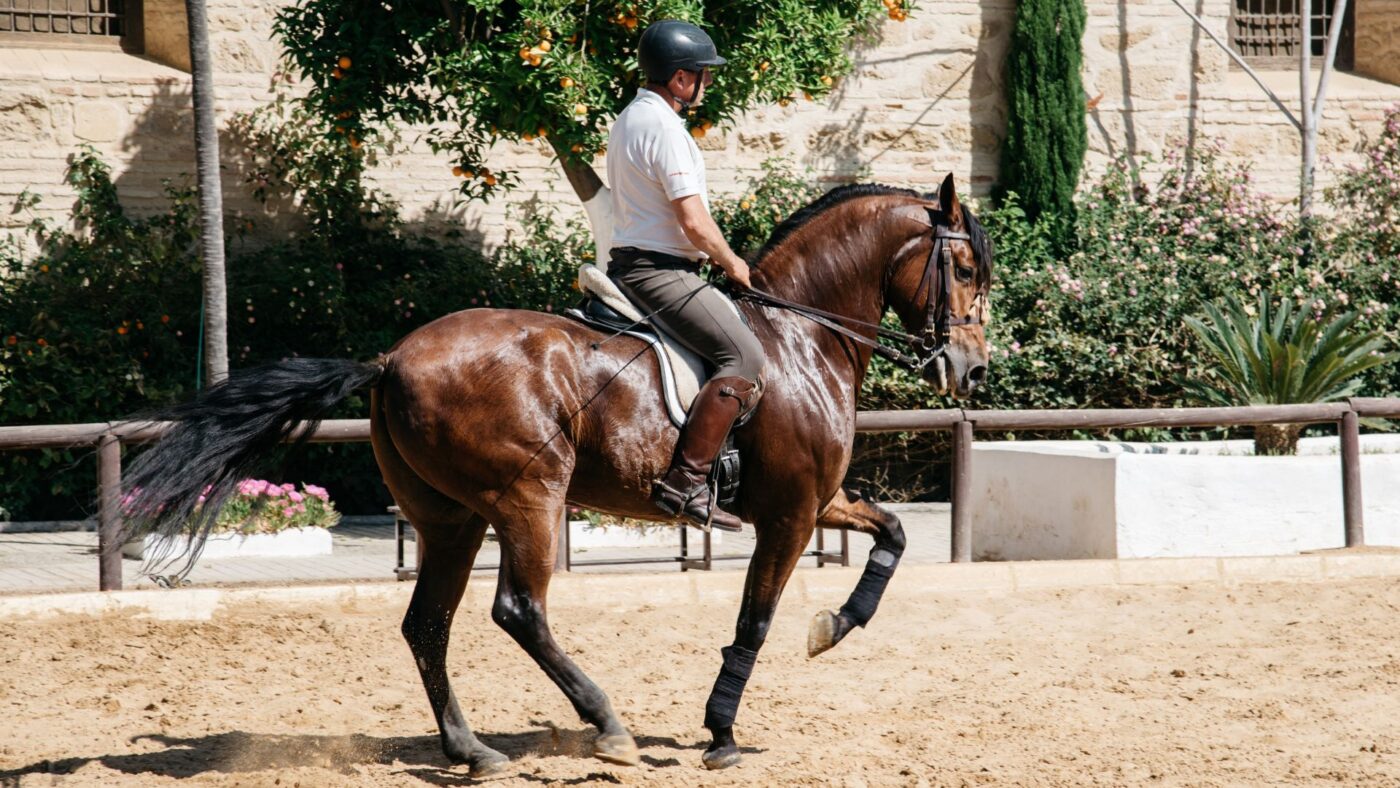
What Makes Andalusians Unique: Their Iconic Physical Traits
Andalusians are known for their striking looks and powerful build, traits that have been carefully preserved through generations of selective breeding. A Genetic Structure Study highlights how their unique features have been maintained while ensuring the breed remains healthy and diverse.
One thing I’ve always noticed about Andalusians is their mane—it’s thick, flowing, and hard to miss. Whether they’re standing still or in motion, it adds to their natural elegance. Their compact build and graceful movements are equally impressive, making them stand out no matter the setting.
Here are some of the defining features that make the Andalusian so distinctive:
- Height: 15.2 to 16.2 hands, giving them a commanding but balanced presence.
- Weight: 1,000 to 1,200 pounds, combining strength with athletic ability.
- Build: Compact and muscular, with a deep chest and strong hindquarters, making them versatile for various disciplines.
- Head: Refined, with a slightly convex profile that conveys nobility and intelligence.
- Mane and Tail: Thick and flowing, often with a natural wave that complements their overall elegance.
- Colors: Primarily gray, though bay, black, and other solid colors are also seen. Check out 12 Common Horse Colors and Patterns for more details.
Andalusian Breed Standards: Key Traits to Know
To learn more about the breed standards that define the Andalusian, visit the International Andalusian and Lusitano Horse Association (IALHA). Their guidelines provide valuable insights into the physical traits and characteristics that make this breed so special.
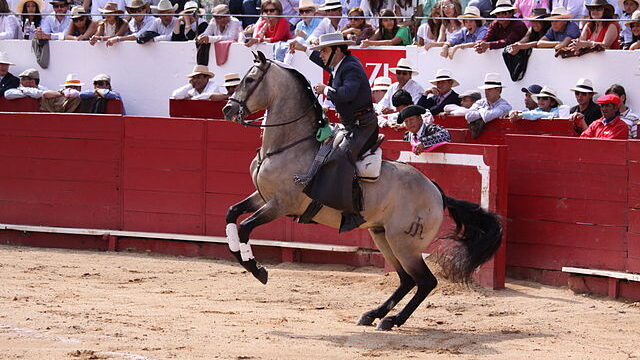
Why Andalusians Are Loved: Temperament and Suitability
Known for their charm and versatility, Andalusians have a temperament that appeals to riders of all experience levels. Whether you’re new to riding or a seasoned equestrian, this breed’s unique personality traits make them a joy to work with.
Andalusians: Perfect for Riders of All Levels
Andalusians are renowned for their intelligence and trainability, making them a joy for riders of all levels. Their docile and willing nature is often described as eager to please and quick to learn, making them an excellent choice for beginners developing their riding skills. They tend to be forgiving of mistakes and respond well to clear guidance.
A friend who owns Andalusians once shared how impressed she was by their adaptability. She described her gelding as patient and calm during her young daughter’s first riding lessons, but spirited and expressive when performing advanced movements in the dressage arena. That balance between gentleness and energy really speaks to the breed’s versatility.
At the same time, Andalusians possess a spirited side that experienced equestrians love. Their athleticism and natural ability to collect and perform precise movements make them stand out in advanced disciplines like dressage and classical riding.
While Andalusians are typically even-tempered, they do have individual personalities. Some may be more sensitive or, on occasion, a bit stubborn. However, their overall willingness to learn and strong connection with their riders make them a popular choice for a variety of equestrian activities.
Learn more about selecting the right horse for your needs with Best Horses for Riding: Top Breeds for Equestrians.
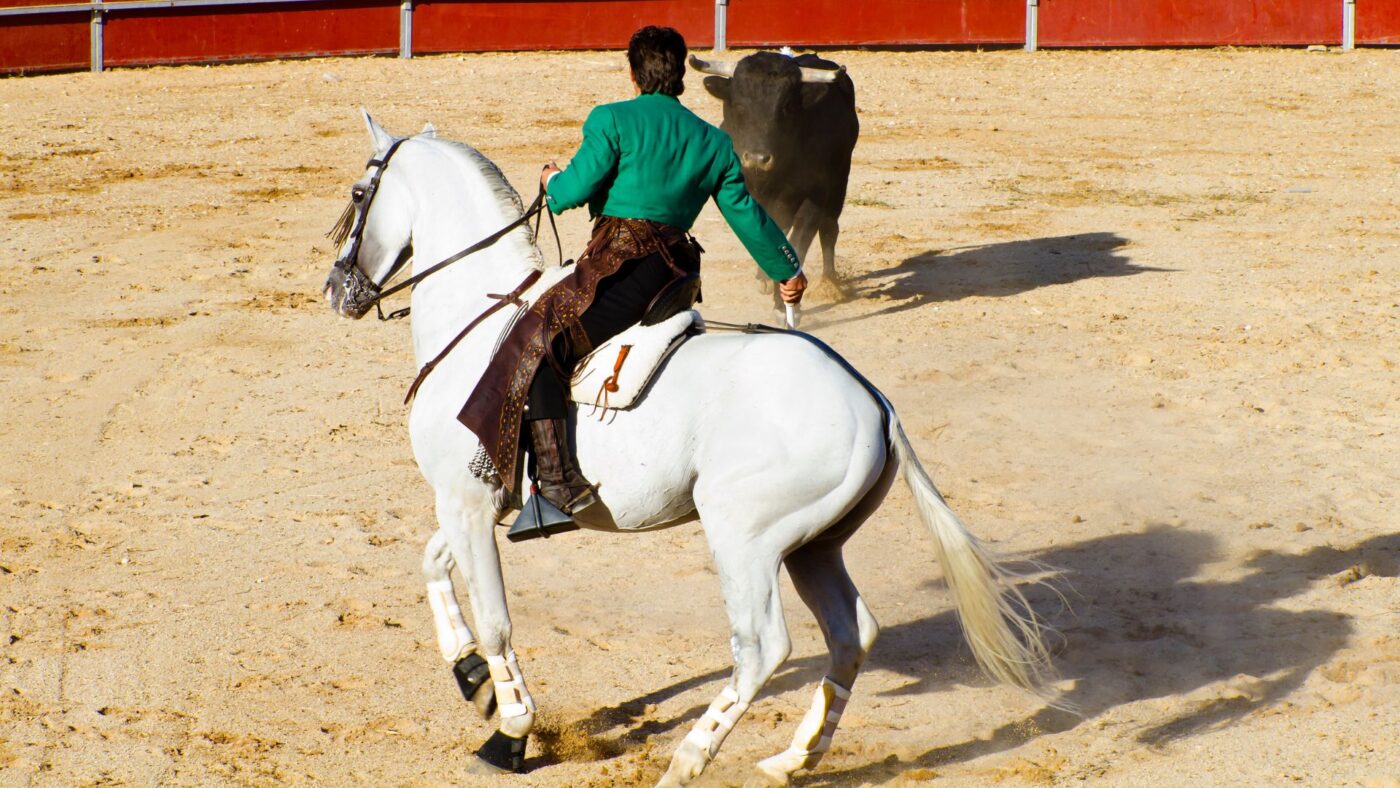
How Andalusians Excel: Versatile Roles in Equestrianism
Andalusians are incredibly versatile horses, excelling in various disciplines. Their athleticism, intelligence, and trainability make them ideal for both competitive and recreational riding.
Dressage
- 🏇 Key Traits: Their natural ability to collect, graceful movements, and sensitivity to rider aids make Andalusians exceptional dressage horses.
- 🏅 Competitive Edge: They can perform intricate movements like piaffe and passage with precision and expression, excelling in high-level competitions.
- Learn More: Discover how Andalusians compare to other breeds in Are Andalusian Horses Warmbloods?.
Classical Riding
- 🎭 Cultural Significance: In Spain, Andalusians are synonymous with classical riding traditions.
- 🌟 Performance Excellence: They frequently appear in exhibitions, showcasing their elegance with advanced movements like the Spanish walk.
Showjumping
- 🏆 Agility in Action: While not as common as in dressage, Andalusians’ agility and careful footwork allow them to navigate courses with precision.
- 🚀 Versatile Athletes: Their athleticism enables them to clear jumps effectively and compete at various levels.
Driving
- 🚗 Strength and Stamina: Andalusians excel as driving horses, whether for pleasure, competition, or traditional carriage rides.
- 🛠 Dependable Nature: Their calm temperament and balance make them reliable choices for all forms of driving.
- 🌟 Personal Story: My cousin operates a carriage touring business in Niagara, Canada, and one of his carriages is drawn by a pair of gray Andalusians. He often says their steady demeanor and eye-catching beauty are what make them the favorites among tourists.
Ranch Work
- 🐄 “Cow Sense”: With intelligence and agility, Andalusians are well-suited for working cattle and performing quick turns.
- 🌾 Adaptability: They handle diverse ranch tasks with ease, making them valuable on the farm.
Traditional Role in Bullfighting
- 🎯 Courage Under Pressure: In Spain and Portugal, Andalusians play an integral role in bullfighting.
- 🐂 Precision and Bravery: Their speed and agility allow rejoneadors (bullfighters on horseback) to maneuver skillfully and safely around bulls.
Caring for Andalusians: Diet, Exercise, and Grooming
Diet and Nutrition
Andalusians thrive on a balanced diet tailored to their energy needs and activity levels.
- 🐴 Hay: High-quality hay forms the foundation of their diet. Easy keepers may do well on grass hay, while more active Andalusians benefit from alfalfa or a mix.
- 🌾 Grain: Horses with higher workloads often require grain for added energy. Choose a type that suits their activity level and nutritional needs.
- 💊 Supplements: Consider joint supplements for performance horses involved in activities like dressage or jumping. Additional vitamins and minerals may support overall health.
For breed-specific care tips, visit the Andalusian Horse Association.
Exercise
Regular physical and mental stimulation is essential for Andalusians to remain healthy and happy.
- Turnout: 🌳 Daily turnout in a pasture or paddock allows them to move freely, graze, and socialize.
- Training: 🏇 Structured sessions tailored to their discipline, such as dressage, trail riding, or jumping, help build fitness and engagement.
Grooming
The Andalusian’s flowing mane and tail are iconic but require consistent care:
- Brushing: 🪮 Use a mane and tail brush daily to prevent tangles and maintain shine. A body brush and hoof pick also help monitor their overall health.
- Bathing: 🛁 Bathe every 1–2 weeks as needed with gentle equine shampoos and conditioners to keep their coat healthy.
Personal Note: With my Thoroughbreds, I’ve found regular grooming to be essential not just for their appearance but for bonding and spotting early signs of skin or health issues. Andalusians are no different—those luxurious manes deserve extra care!
For more grooming tips, check out Shiny Horse Coat: Expert Tips for a Healthy Glow.
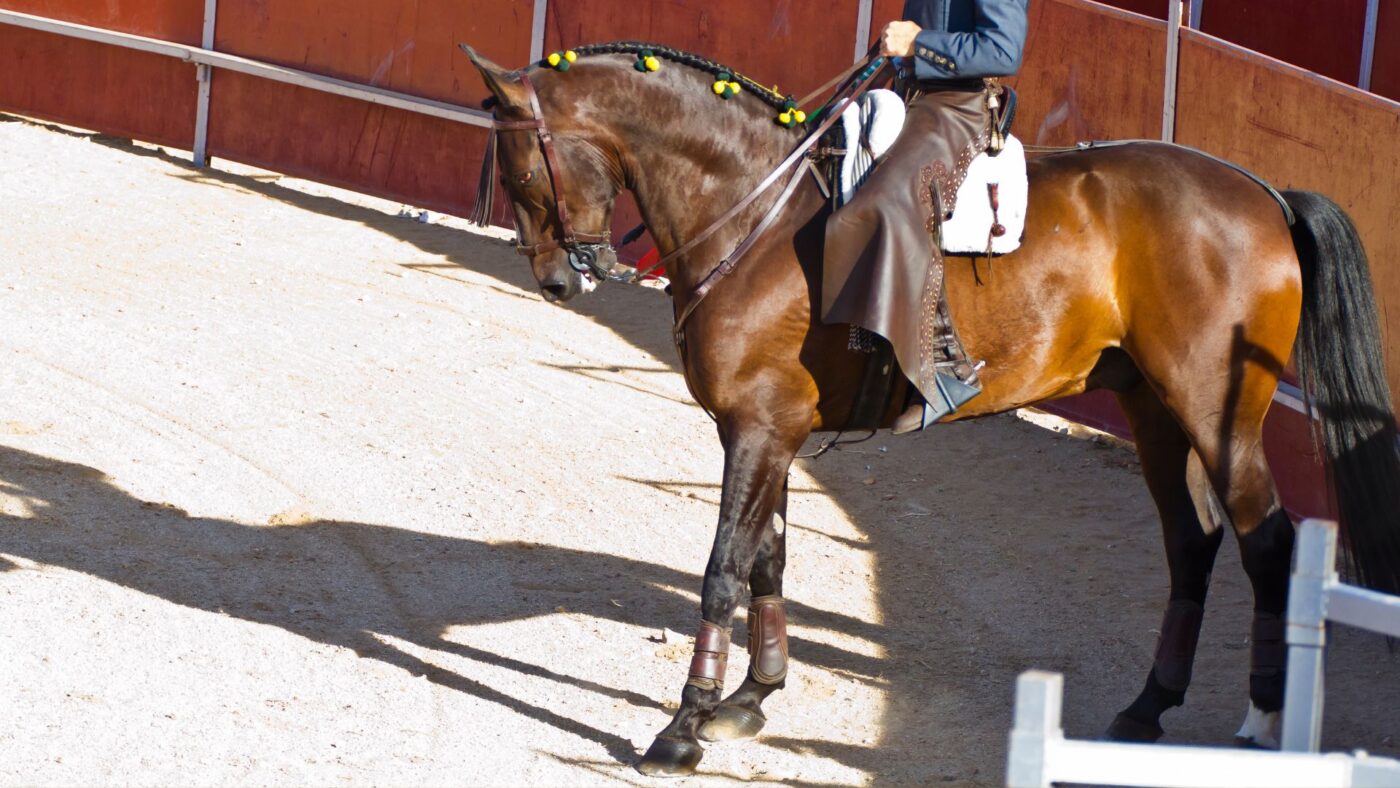
How Much Does an Andalusian Cost? Factors That Impact Price
Andalusians are a premium breed, and their prices reflect their quality and demand. Typically, you can expect to pay between $15,000 and $50,000 or more, depending on various factors:
- Age: Younger, well-started horses tend to cost more than older, seasoned ones.
- Pedigree: Horses with exceptional bloodlines and proven performance ancestry command higher prices.
- Conformation: Andalusians with excellent conformation that closely matches breed standards are highly valued.
- Training: The level of training plays a significant role. A horse with advanced dressage training can exceed $50,000, while a prospect may fall on the lower end of the range.
- Show Record: A successful competition history, especially in dressage or classical riding, adds significant value.
- Gender: Mares with proven breeding potential often come at a premium.
- Color: While gray is the most common color, rarer hues like black or palomino can occasionally influence price.

Example: A young Andalusian with exceptional bloodlines and good conformation might be priced around $25,000–$35,000. A trained dressage horse with a successful show record could easily exceed $50,000.
Personal Note: In my experience with Thoroughbreds, factors like bloodlines and performance heavily influence price. Similarly, in the Andalusian world, attributes like dressage training and adherence to breed standards significantly affect value.
Explore pricing trends for other breeds at 10 Most Expensive Horse Breeds.

FAQ: Common Questions About Andalusian Horses
What Makes Andalusians Unique?
Andalusians blend of beauty, intelligence, and versatility makes them one of the most admired breeds.
Are Andalusians Good for Beginners?
Yes, Andalusians calm disposition makes them suitable for novice riders.
How Much Does an Andalusian Horse Cost?
Prices range from $15,000 to $50,000+, depending on factors like age, pedigree, and training.
What health issues are common in Andalusian horses?
Like many purebred animals, Andalusians can be prone to specific health issues, including Equine Degenerative Myeloencephalopathy (EDM) and laminitis. Preventive care, such as regular vet visits and appropriate diet management, plays a crucial role in mitigating these risks.
What is the typical lifespan of an Andalusian horse?
Andalusian horses generally enjoy a long lifespan, often living up to 25 years or more with proper care. Regular health check-ups and a well-maintained environment contribute significantly to their longevity.
Conclusion: The Enduring Legacy of the Andalusian Horse Breed
The Andalusian horse represents a unique combination of history, beauty, and versatility. Whether you’re drawn to their grace in dressage or intrigued by their role in Spanish culture, Andalusians offer something special for every equestrian enthusiast.
Share Your Experience: Have you owned or ridden an Andalusian? I’d love to hear your stories in the comments below or email me at mileshenry@horseracingsense.com.

About the Author: Miles Henry
Lifelong Horseman | Racehorse Owner | Published Author
Miles Henry brings over 25 years of hands-on experience training and owning Thoroughbred racehorses. Raised with Quarter Horses and Appaloosas, he’s spent a lifetime learning from horses—on the track, in the barn, and in the field. Today, he runs a small but successful racing stable in Louisiana and shares real-world insights on HorseRacingSense.com, helping horse owners, fans, and bettors navigate the sport with confidence.
📚 Books: View Miles’s books on Amazon »
🎧 Podcast Guest: Animal Tales Ep. 32 |
YouTube Interview
📩 Newsletter: Sign up for racing tips and horse care advice »
🔗 Follow Miles:
Twitter |
Facebook |
YouTube



